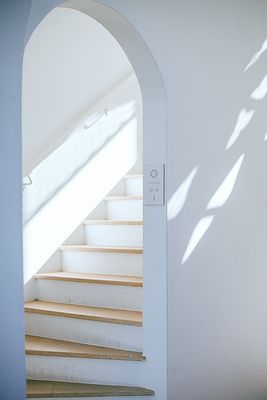
Buying a house in Sydney can be challenging for many reasons. This guide will help you identify a good property quickly and give you the confidence to ignore the unsuitable ones.
Resort House — Sold $5.9M 2018
Introduction
The guide is in 5 basic parts and includes a checklist that you can use for each property you assess. This is more of a beginners guide, so it does not use jargon or be too technical.
This guide is not intended to be exhaustive in its coverage of the topic, and it is written from an Architect’s perspective, not a builder’s, not an agent’s, not a broker’s or a solicitor’s. You may well need advice from other professionals.
Settle on your priorities:
There is no point rushing in to buy a home and then finding out that you wanted a big backyard or space for two cars. You should also include some $ value or budget here, but purchase price / value is not a factor discussed in this guide.
As an architect, I often visit a home and find out that what my clients want is not feasible on their site — they bought the wrong property. If you are unsure about a property’s renovation potential, ask an Architect before you buy.
Some everyday ‘must-have’ items include the number of bedrooms, bathrooms and car-parking, but should also include more obscure items such as a lap pool, space for a boat / trailer, proximity to the right schools, granny flat, views from a future upper-level addition. What are yours?
List of ‘must have’ items (priorities):
Your long term goals:
Despite what you might think right now, you may want more from your property in the future.
It is worth understanding that some homes are more natural and cheaper to renovate and add to than others while some are just impossible without a complete and costly rebuild.
These days the cost of stamp duty, advertising, agent’s fees and legals could make you think twice about buying and selling a property for short term use.
Future goals are similar to ‘must-have’ items, except that you can live without them for now.
Possible long term goals (future planning):
Preferred suburb / location:
To start with, let’s ask a few questions;
Where do you want to live?
Close to shops, park or beach?
Future work or school travels?
What locations or streets can I afford?
Distance from friends and family?
List of suburbs and locations (preferred):
Where’s the sun?
What is the home’s orientation? Does it get enough sun? The agent’s photos always look bright, so what’s the best orientation regardless?
Generally speaking, the best orientation is one that allows you to take the best advantage of the sun. This means sun to living areas and backyard (or private space). The best and most controllable sun comes from the North.
Proper orientation will also allow you to cast less shadow on your neighbour’s home and block (if you add another level in the future) and protect you more from your neighbours possibly overshadowing you.
You will have to work this out for yourself because properties vary in shape and orientation, and many agents will claim every backyard faces North. If you can’t get north, then West is the next best orientation for the yard because it offers afternoon sun.
Another reason to have south at the front is privacy. If the north sun comes from the front, opening the blinds to let the sun in may affect your privacy.
High side of the street:
Almost all sites have some slope, and it is generally much better to slope down to the road.
There are quite a few reasons for this, but the most important one is a stormwater runoff.
These days many councils have controls that can force you into costly stormwater systems. If you can’t drain your roof or surface water to the street quickly, you may need a pump-out pit, pumps, dispersion trenches, and the like, and possibly an ‘on-site detention’ system (OSD).
In some cases, it is almost impossible to get adequate drainage without an easement. Easements can be very expensive and take a long time to arrive.
Beware of battle-axe blocks on the low side of the street that doesn’t have the use of a drainage easement or a water frontage, especially if they are smallish blocks with clay soil. Please don’t risk it.
If you are unsure about a site’s drainage, I suggest you get specific advice from a stormwater engineer who is familiar with the council’s controls.
Check the contract
Check planning certificate:
Every contract for sale must come with a current section149 (s.149) document which lists the following information and more about the property for sale;
Council locality & zoning
List of applicable codes & legislation
Complying Development Codes
Local transport services & on-street parking
Easements and facilities, i.e. sewer mains
Heritage or conservation issues, incl. neighbours
Bushfire danger levels (BAL)
Geotechnical hazards or flood-prone land
Acid sulphate soils
Scenic protection or foreshore protection areas
Environmentally sensitive areas, (critical habitat)
Road widening and re-alignment
Tree preservation orders
s94 contributions
Restrictive covenants (current planning codes may extinguish some old agreements)
Other possible issues may come up, depending upon the property in question.
This guide does not give legal advice. For issues to do with forms of ‘title’ you should seek legal advice / talk with your conveyancer.